34+ Sample Vehicle Checklists
-
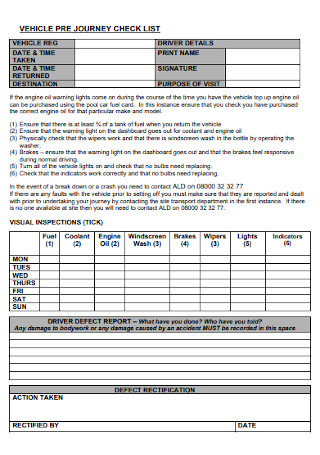
Vehicle Pre Journey Checklist
download now -

Pre Driving Vehicle Checklist
download now -
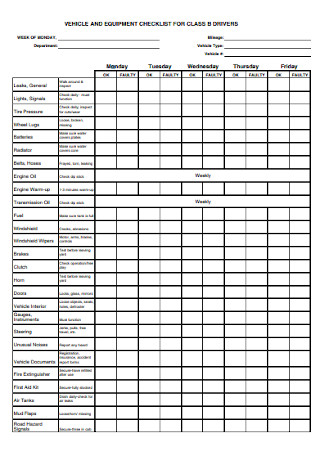
Vehicle Checklist for Driver Classes
download now -

Routine Vehicle Maintenance Checklist
download now -
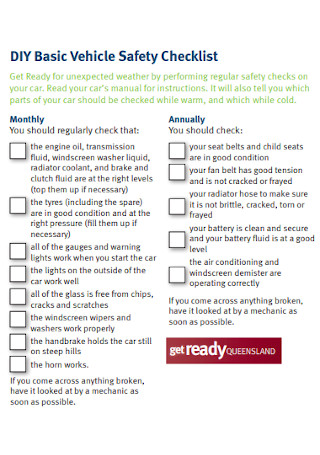
Basic Vehicle Safety Checklist
download now -
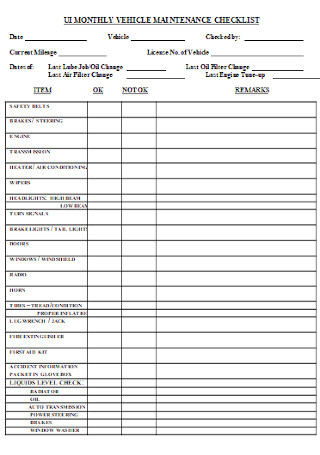
Vehicle Maintenance Checklist
download now -
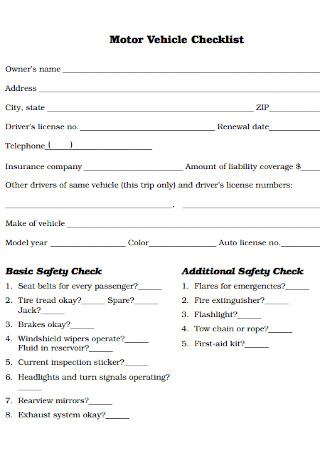
Motor Vehicle Checklist
download now -
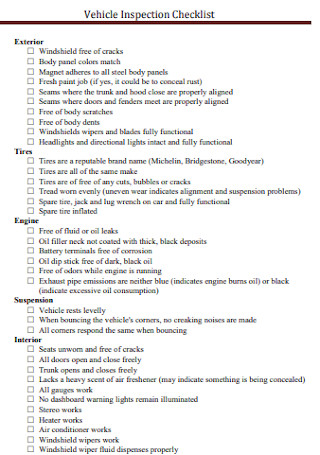
Vehicle Inspection Checklist
download now -
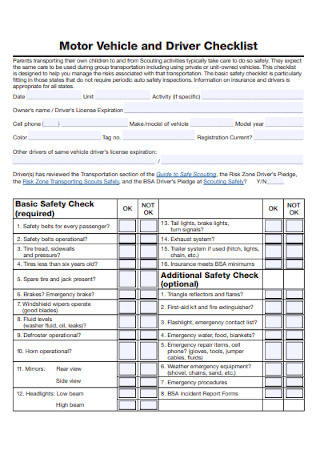
Motor Vehicle and Driver Checklist
download now -
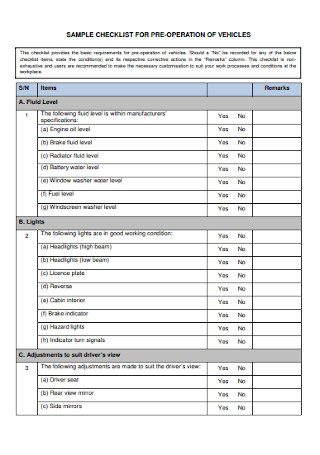
Checklist for Pre Operator of Vehicle
download now -
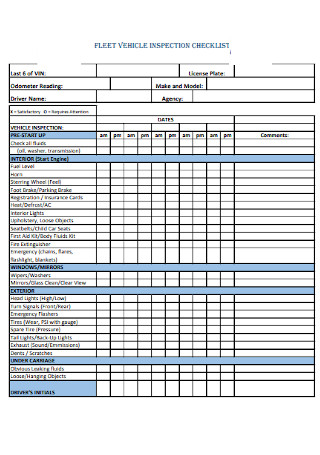
Fleet Vehicle Inspection Checklist
download now -
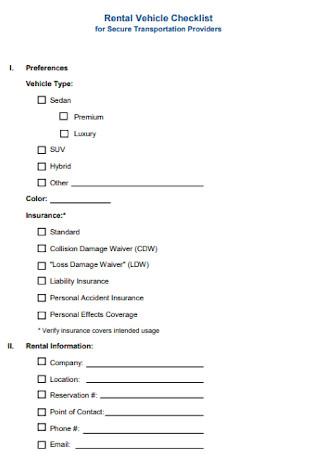
Rental Vehicle Checklist
download now -
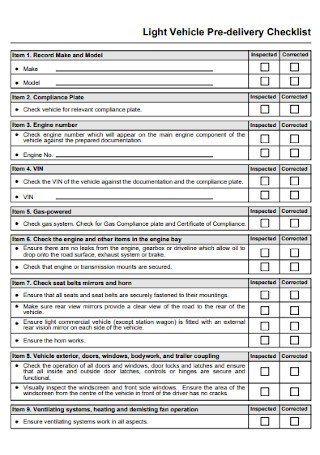
Light Vehicle Delivery Checklist
download now -
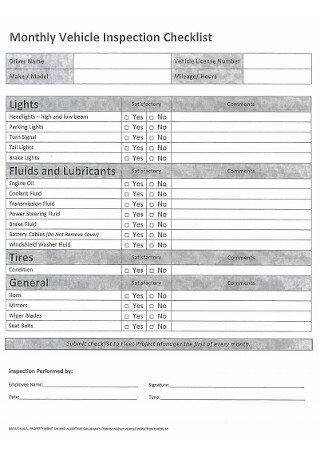
Monthly Vehicle Inspection Checklist
download now -
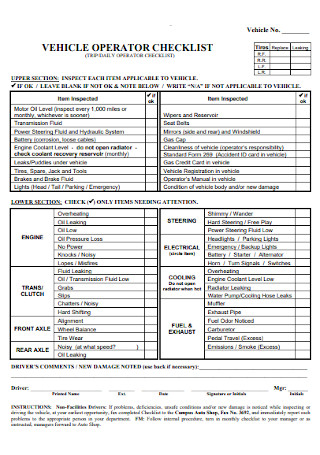
Vehicle Operator Checklist Template
download now -
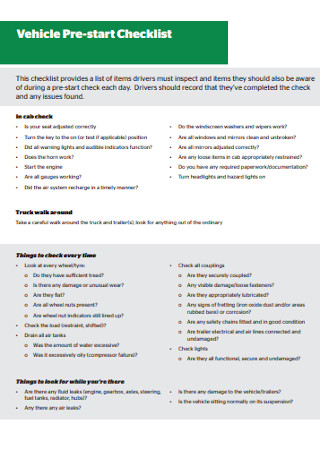
Vehicle Pre start Checklist
download now -
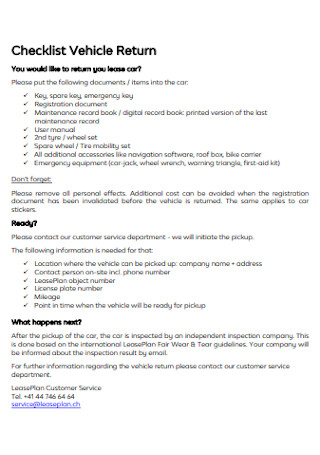
Checklist Vehicle Return Template
download now -
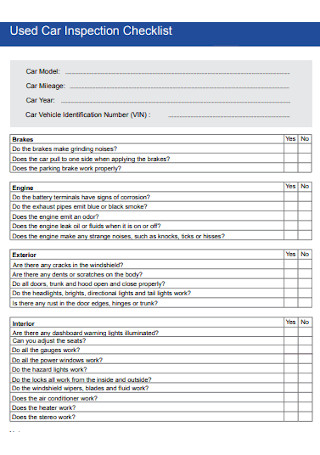
Car Inspection Checklist
download now -

Vehicle Service Inspection Checklist
download now -
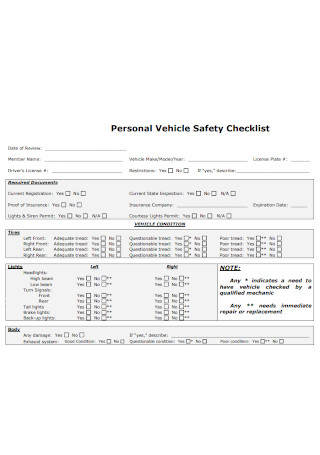
Personal Vehicle Safety Checklist
download now -

Vehicle and Trailer Inspection Checklist
download now -

Vehicle Record Acceptability Checklist
download now -
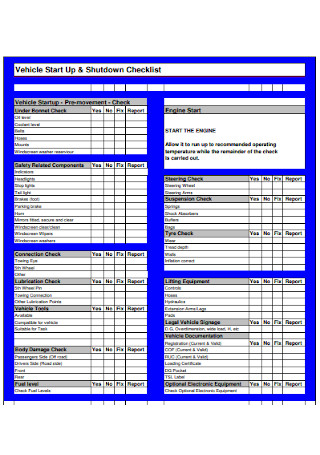
Vehicle Start Up Shutdown Checklist
download now -

Annual Vehicle Report Checklist
download now -
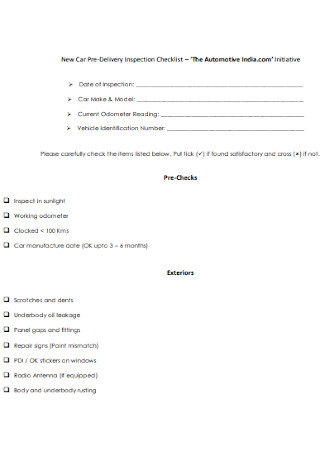
New Car Delivery Checklist
download now -
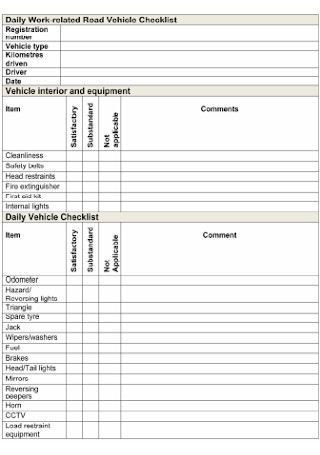
Road Vehicle Checklist
download now -
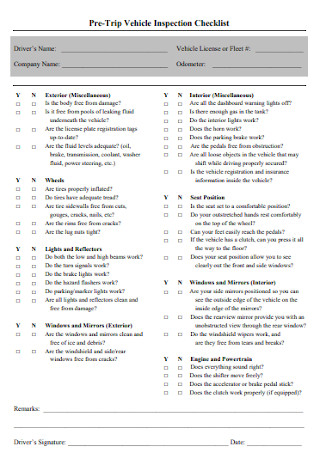
Pre Trip Vehicle Checklist
download now -

Drivers Daily Vehicle Report
download now -
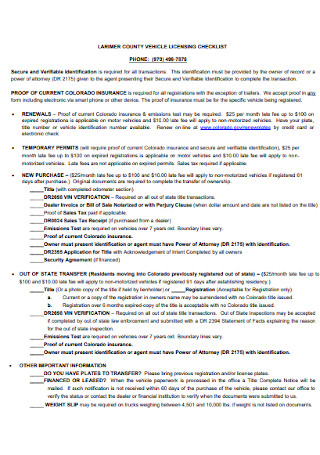
Vehicle Licensing Checklist
download now -
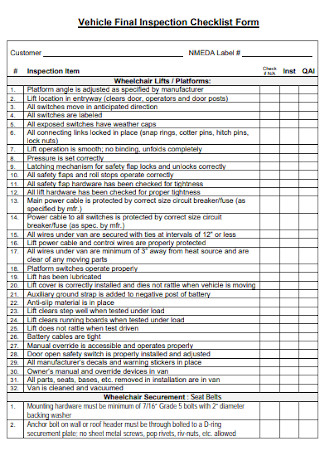
Vehicle Final Checklist Form
download now -

Vehicle Operation Checklist
download now -
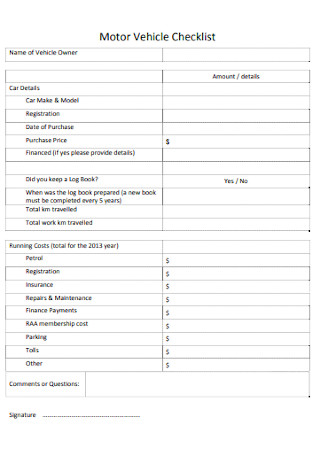
Motor Vehicle Checklists
download now -
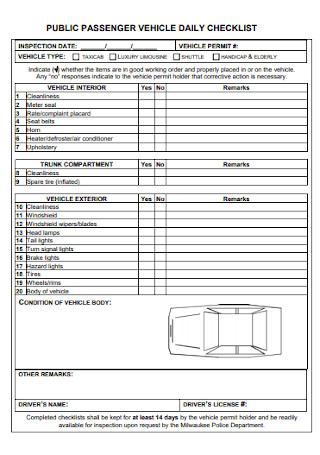
Public Passenger Vehicle Checklist
download now -

Vehicle Repair Checklist
download now -
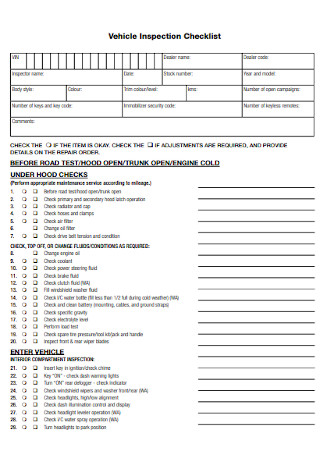
Standard Vehicle Inspection Checklist Example
download now
What Is a Vehicle Checklist?
As its name suggests, a vehicle checklist is a list used to assess a vehicle’s working condition. It helps distinguish any mechanical issues or defects that can cause accidents or operational difficulties. Safety officers use a vehicle checklist to conduct routine inspections or pre-start checkups. Owners and mechanics also utilize the use of it during vehicle maintenance. It is essential to check the vehicle’s condition at least once a day.
According to the data gathered by the World Health Organization, road traffic crashes cause 1.35 million people to lose their lives. As a driver, you are responsible not only for your safety but for others as well.
Details in a Vehicle Checklist
A vehicle failure is one of the things you should avoid when it’s business hours. Not only will it cost you your time, but it will also cost a lot of money. If you use your car, find time to inspect it using the checklist. Here are the basic information found in a vehicle checklist.
Vehicle Checklist Procedure
It is crucial to examine the vehicle. May it be you, a mechanic, or an authorized safety officer. The vehicle is safe to use in the streets only when it passes the vehicle checklist. Follow these steps to guarantee that your automobile is in its peak condition.
Step 1: Verify Identification Details
Identification details correspond to both the vehicle and the owner. The owner must present the insurance carrier and his license; it includes manufacturer, model, year of manufacturing, and Vehicle Identification Number (VIN) of the automobile.
Step 2: Preliminary Inspection
The inspector takes note of the odometer reading and ensures the car is running. The documentation is made available as reference and proof to the owner.
Step 3: Vehicle Examination
Inspectors tackle the visible parts of the vehicle first. The list will include mirrors, windows, windshields, bumpers, tires, interiors, lights, brakes, and the engine. The checklist used may be binary or use a percentage rating. Inspectors also take photos of the car through different angles for visual evidence.
Step 4: Result Notification
After a thorough inspection, the inspector must relay the results to the owner; whether the vehicle passed or not.
FAQs
What is the importance of a vehicle checklist?
A simple vehicle check daily can save your life. According to an article published in 2019, fatal and non-fatal crashes will reach $1.8 trillion by 2030. Before it happens, we must find a way to prevent it. The checklist can be done by anyone at any time. Do not let the length of the list intimidate you. It takes only a few minutes to complete, and sooner or later, it will become a habit.
Is a car maintenance plan worth it?
The average cost of car maintenance in America is around $683 a year in 2018, according to Statista. Maintenance costs vary depending on the condition of your car. It is a safe bet to set aside money for maintenance if you don’t plan on taking a car maintenance plan. However, these plans can be convenient and cost-effective for new vehicles, given that you research and negotiate with the dealer.
The benefits of car insurance
According to Statista, insured privately-owned vehicles reach 203 million in 2015. Based on the statistics, more Americans are filing for car insurance. What benefits can you gain from having car insurance? One, it saves you from huge expenses. It covers expenses from collisions and property liability. Second, it protects you and others in case of accidents. Having car insurance guarantees you have coverage from and property or injury costs. Third, it saves time. Auto insurance policy will handle repairs and replacement, towing fees, even damage costs of other drivers. Lastly, it goes hand in hand with your health insurance. Auto insurance policies can also help cover medical expenses as a result of an automobile accident. These are some of the benefits of having car insurance, and every American is encouraged to have one.
We have to face the reality that car accidents happen. However, there are precautionary measures to lessen the probability of these instances from happening. The idea of starting with vehicle checklists and personal car inspections can go a long way if made into a habit. It is also encouraged to save for car maintenance and avail car insurance to reduce costs in accidents. As the famous saying of F.S. Hughes goes, “Safety brings first aid to the uninjured.” We must always stay ahead and always be prepared. Make sure to check out the samples of vehicle checklists above and practice safety!
